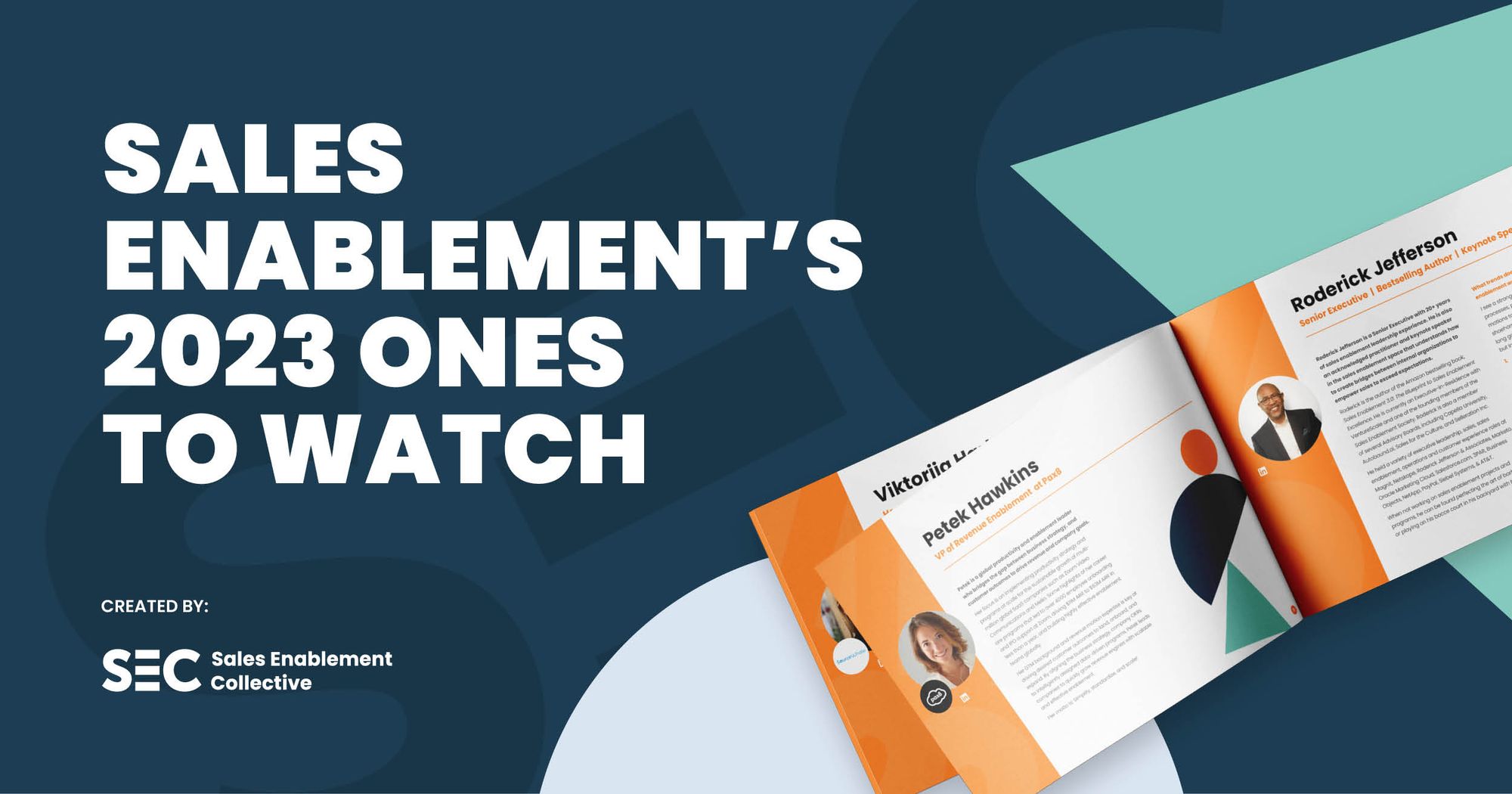In this episode of the Sales Enablement Innovation podcast, we were joined by Del Nakhi, Senior Director of Global GTM Strategy, Operations, and Enablement at MariaDB, and SEC One to Watch in 2023!
Check out the highlights of our discussion, including:
- How you can effectively eliminate siloes through revenue enablement
- How to manage expectations from stakeholders and get buy-in for enablement
- Why she doesn’t view enablement as a one size fits all approach
- How to balance your tech stacks needs - and why change management is key
And much more!
This episode of the podcast was sponsored by Uniphore's Q for Sales. Check out the highlights from the interview below, or listen to the full episode here. 👇
Eliminating siloes through revenue enablement
Is the move from sales enablement to revenue and GTM enablement a natural evolution, and something that's inevitable for teams?
I think it's natural and necessary, and if you run your enablement team in a way that you're able to have impact and show the value that you're able to provide to your stakeholders, it's absolutely a possibility.
Part of the reason we ended up transitioning to revenue enablement is because when I came into the organization, my team had already told me that there were different departments doing enablement.
It felt a little siloed, so they really wanted to bring it all together under one team.
So I knew my team really wanted to achieve that as well. And just by demonstrating what we were able to do for the sales organization, that opened it up for us to be able to support multiple organizations.
The importance of communicating regularly and openly with your CRO
How do you manage expectations from stakeholders and get that buy-in for enablement?
Expectation management is absolutely critical. I know that part of the challenge we have with enablement is wondering where to divert our attention.
There's always limited capacity, no matter how big or small your team is. And especially if you're supporting the revenue organization, there are so many different directions that you can be pulled in.
Having an understanding of what the business needs are at a high level and focusing on your primary stakeholders' objectives is a great place to start.
You really have to be able to understand that there are limited resources, and so being able to communicate that with your stakeholders is essential.
I think one of the challenges that we often see is that folks underestimate how much work it actually takes to create content and create training, and manage change.
A lot of business growth centers around changing things - changing behavior and changing structure processes.
We don't want to focus on too many things and spread ourselves so thin that we're not having the intended impact, because then it becomes a vicious cycle where we're not able to get the support and investment we need to grow the team and have further impact on the organization.

So it's critical to be vocal about what you need with your team, understand who your end-user customer is (depending on who you're serving), what the needs are with all the different departments, and figure out with your team where you want to prioritize based on the needs of the business.
Communicate regularly and openly with your stakeholders, especially your CRO. That's a critical partnership to have.
And even with the support that we have from them, there's also a process of really helping them understand why we need specific roles.
I met yesterday with my CRO to talk about our enablement organization growth and where we want to take it. He had his perspective on what he wanted us to prioritize and I shared what I felt we needed to focus on as well.
Open dialogue is really the way to go in terms of stakeholder expectation management, but it's also a really critical part of the job, especially for the leader of the enablement organization.
Enablement shouldn’t be a one size fits all approach
Having dealt with sales teams exclusively, and now in revenue enablement - do you take a different approach to enabling a sales team versus a customer success team? Or do you have a more unified approach?
It goes back to really understanding the needs of that team and department, and working closely with the leadership of that department, frontline leaders, and that particular audience as well.
We have a role called Customer Engineer in our customer success organization, and I recently met with the leader of that team to talk through what some of his needs are.
- What’s our timeline?
- What kind of resources do we have?
- What do we need to accomplish?
- What does success look like?
And also, understanding how people learn, in order to figure out what the right solution is in that respect.
The leaders could go and start a training, but might not necessarily have the understanding of how to make this stick.
As an enablement professional, I have to ask myself: “How do I really change that behavior and make sure this is actually something that people are able to follow through with?”
Offering that kind of consulting and thought leadership with that department or leader is a great way to start. Then using all that information to figure out the right training solution.

The other responsibility of the enablement organization is to be vocal when the solution isn’t actually training.
The reason I bring that up is because when we look at the entire enablement ecosystem, that includes people, tools, communication, and processes.
Processes especially are really critical, and we can help departments evaluate what the right solution is to the problem or challenge that they're facing.
Oftentimes, we act as a hub because we get information from so many different departments. We don't really work in a silo if we're doing our jobs effectively.
And being able to surface information to different leaders to be able to make critical decisions, especially if the solution isn’t a training solution, is really critical.

How to avoid technology bloat
How do you balance the tech stack between having too much and too little, and still meeting all the business needs?
That's a great question. I think that understanding the value that piece of technology brings to the organization, as well as what is missing currently from what the teams need is one place to start.
Start thinking about which tools actually sync up and work well together, that’s another way to really assess your options.
You definitely don't want to have technology bloat. I've experienced that before and it’s pretty overwhelming - but it’s about being able to think through what's needed.
As an example, for us at MariaDB, we really needed a content management system, and we're now in the process of implementing Highspot. That was by recommendation of peers who’ve used that system before.
But it’s really about being conscious of what you’re trying to achieve:
- Do you understand your learners and your audience?
- Are they going to be willing to adopt that technology?
I became certified in ADKAR (a change management model), and before I even knew about it, that was the process I was already following with change management.
It. b’s about making sure that you increase Awareness, Desire, Knowledge, Ability and Reinforcement of the technology you’re trying to implement.
You also need to have the managers and especially frontline leaders involved in that process and holding their team accountable to use it.
Those are all really critical in addition to the actual enablement you provide to help people start to use it.

Want to be a podcast guest like Del?
We're always looking for sales enablers to share their stories and discuss their areas of expertise on the show!
To enquire about being a podcast guest, all you have to do is email daniel@salesenablementcollective.com.
Or, you can message one of our team by joining our free Slack community! There, you can also connect with 5,500+ your peers, share ideas, and ask questions.





